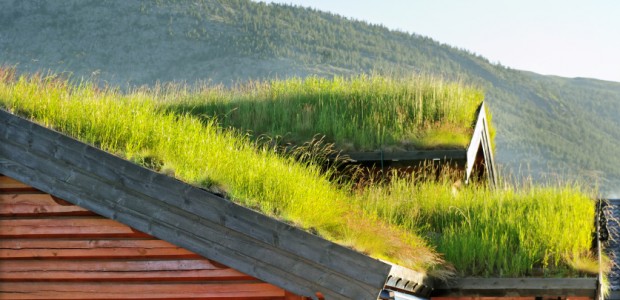A green roof or a living roof is the roof of a building that is covered with vegetation (such as grass and flowers) which is planted over a waterproofing membrane. A green roof has many different and intricate layers that all combine to create a living roof. When a rooftop has a garden with potted plants, it not considered a real green rooftop.
Why are roofs going “green?” Believe it or not green roofs significantly help reduce a buildings heating and cooling costs as well as helps with the urban heat island effect. The urban heat island effect is when a metropolitan area is warmer than its rural counterparts due to human activity. Also green roofs are taking an otherwise unused space and making them environmentally friendly and aesthetically pleasing. See our list below for some benefits of a living roof and how you can get one for your building!
Some Benefits:
- With green roofs, water is stored by the membrane and then taken up by the plants from where it is returned to the atmosphere through evaporation.
- Through the daily dew and evaporation cycle, plants on vertical and horizontal surfaces are able to cool cities during hot summer months and reduce the Urban Heat Island (UHI) effect.
- The plants on green roofs can capture airborne pollutants.
- Community gardens (e.g. local food production or co-ops)
- The greater insulation offered by green roofs can reduce the amount of energy needed to moderate the temperature of a building, as roofs are the sight of the greatest heat loss in the winter and the hottest temperatures in the summer.
- Noise pollution reduction – studies show noise levels in a building can be reduced by as much as 40 decibels
(Facts and benefits taken from greenroofs.org)
Here are some useful websites that you can find out more information and where you can inquire about getting a green rooftop for your building or home!
